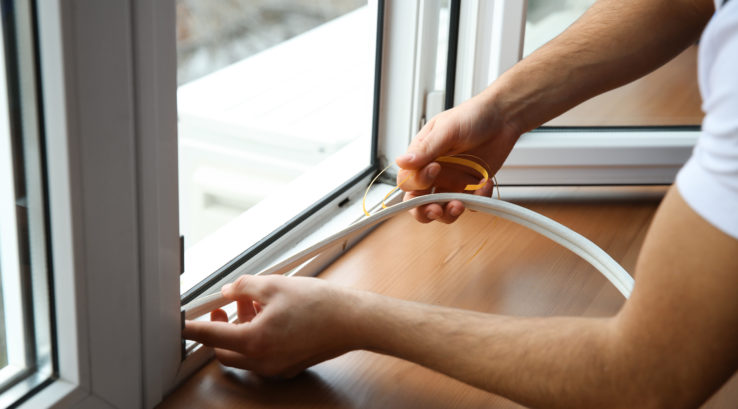Not to be confused with a window sill, window seals refer to the seals that modern windows have to hold in the air between multiple panes of glass. Unlike older windows with only a single pane of glass, modern windows come with two or sometimes three panes separated by layers of air or inert gas and sealed with an elastic sealant. Referred to as insulated glass units, they’re also sometimes called double-pane or thermopane windows.
A failed seal allows moisture and humidity to seep into the air separating the glass panes in your window and causes issues with window visibility. If you’ve ever gone to admire the view from one of your home’s windows and were instead greeted by fogged glass, you probably had a failed seal.
But why exactly do these seals fail?
Why Window Seals Fail
One of the main reasons window seals eventually fail is through a process called solar pumping. As the sun shines down on your windows, the glass expands and puts pressure on the seal. Overnight, the glass cools and shrinks. Day after day, this process repeats, and, over time, the seal may fail. Windows on the south and west sides often fail before others since they receive the most sunshine.
Of course, there are other reasons seals fail too. Anything that causes damage to the elastic sealant can cause the seal to fail, including:
- Poor or incorrect window installation
- Damage to the sealant from a heat gun used during painting
- Harsh chemicals used in painting that damage the seal
- High winds and weather that put pressure on the glass
- House settling, creating pressure on the panes
Detecting Failed Window Seals
As mentioned, fogged windows are a sure sign of window seal failure. When a window seal fails, moist air seeps in between the glass panes and condenses on your windows, causing window fog. And while the fog may eventually go away with weather changes, now that the seal has failed, the problem will keep coming back.
In windows with inert gasses, such as argon or krypton, these gasses serve to enhance insulation. If you lose your seal, those gasses are as good as gone, and your window isn’t doing its job as well as it could. Moreover, these types of windows can even warp, collapse inward, or crack without the inert gasses to hold their stability.
Replacement Window Seals
Unfortunately, you can’t simply replace failed seals. The best way to fix your foggy or warped window is to replace the insulated glass unit. The work should be done by someone knowledgeable who understands how windows are properly disassembled so that the old unit can be removed and the new one installed.
While replacing the insulated glass unit is the easiest way to fix failed window seals, it might be a good idea to replace the entire window if the window is warping or difficult to open due to its age.
Call Thompson Creek for Your Window Needs
Whether you have a failed seal and you’d like to find out what kind of options you have for new windows all around, we can help. We’ve provided the Mid-Atlantic area with custom windows, doors, gutters, siding, and roofing for over 40 years, and we pride ourselves in the work we do. Get in touch today for all your home needs.


